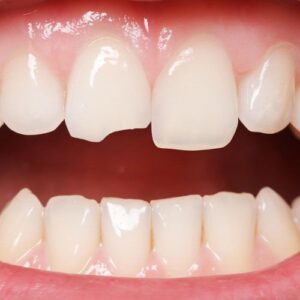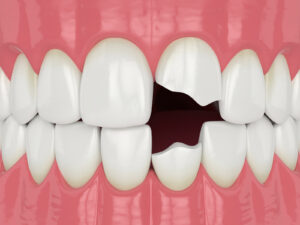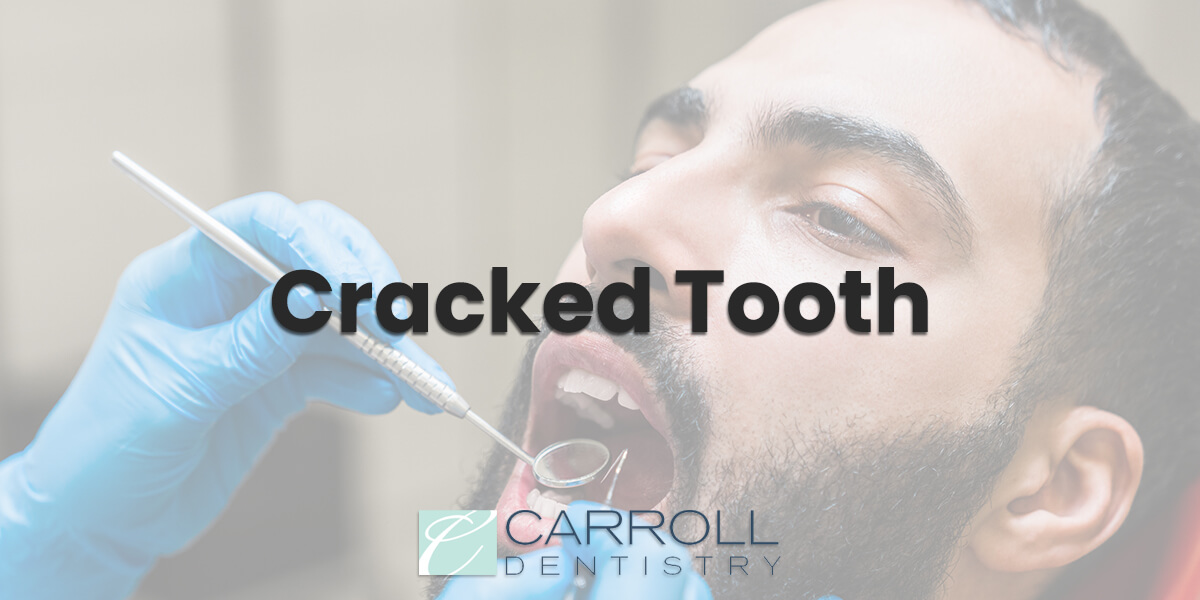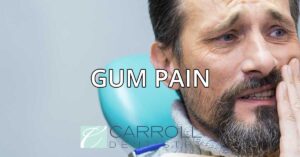Oral health plays a significant role in our visual appearance.
Statistically, more than 90% of people with oral disorders deal with self-esteem issues.
We are talking about challenges such as crooked teeth, cavities, a cracked tooth, tooth decay, malocclusion and periodontal disease, to mention a few.
This is because dental health generally has a great impact on one’s physical appearance.

Even a minor cracked tooth can make you question your confidence. A cracked tooth is a tooth that has been fractured or broken.
Teeth consist of an outer white enamel, a hard dentin layer, and an inner soft tissue called the pulp.
The pulp is where the tooth’s nerves and blood vessels are located. There are several types of cracks that can happen to teeth including:
- A cracked tooth is a vertical break in a tooth that extends from the chewing surface down toward the root. The crack can extend to the gumline or continue below the gumline.
- A vertical root fracture is a crack that begins in the root and extends upward toward the chewing surface. This type of crack rarely causes symptoms and may not show up until the surrounding bone and gums have problems.
- A split tooth is a cracked tooth that has progressed to the point that the tooth is in two pieces.
- Craze lines are very small, shallow cracks in the enamel that don’t affect the dentin. These tiny cracks are very common in adults and usually don’t cause any symptoms.
- A cracked cusp is a break of one of the pointed areas of a tooth’s chewing surface. This typically occurs around large fillings and usually doesn’t affect the pulp or cause much pain.

SYMPTOMS OF A CRACKED TOOTH
The symptoms of a cracked tooth vary depending on the severity of the crack. Some of the most common symptoms of a cracked tooth include:
- Sensitivity to hot or cold
- Pain when chewing
- Spontaneous shooting pain
- Excessive pain when eating sour or sweet foods
- Pain when biting down
- In rare cases, a constant, dull toothache occurs
- Tooth feels loose or shifts in the mouth
- Inflammation or infection in the soft tissue around the tooth
- Fever
- Swollen lymph nodes
- Bad breath that doesn’t improve after brushing and flossing
HOW DENTISTS DIAGNOSE CRACKED TEETH
Diagnosing a cracked tooth can actually be very difficult, so it’s important you carefully explain your symptoms to the dentist.
Unfortunately, not all cracks in teeth will be visible on traditional x-rays, and if you aren’t experiencing the symptoms of advanced dental cracks and breaks, this dental damage may go undiagnosed for years.
In order to accurately diagnose a cracked tooth, your dentist may need to perform a variety of assessments, including:
- Manual examination – using small dental exploration tools called probes, your dentist will manually place pressure on the tooth, feeling for areas where the probe catches or there is a change in the texture of the tooth.
- Gum tissue examination – root fractures and split teeth often lead to irritation and inflammation in the soft tissue, so this can be a warning sign of dental cracks and breaks.
- Bite tests – your dentists may ask you to bite down on putty or articulation paper so they can see any unusual aspects in the way your teeth fit together.
- Discussion of dental habits – the dentist may ask you if you chew on ice, bite your fingernails, use teeth to open packages, or suffer from chronic teeth grinding and clenching.
- Visual examination – the dentist will use magnifying mirrors and/or dental microscopes to examine the surfaces of teeth for small cracks that may not appear on x-rays.
- Dyeing the tooth – dye may be applied to a tooth prior to examination and x-rays to help any cracks or breaks in the tooth’s enamel stand out.
Whatever the cause of your cracked or broken tooth, we can stop the pain and help get your beautiful smile back. Call to schedule an emergency dentistry appointment today.
Maybe you don’t know but, a bad diet can hurt the health of your teeth and gums. Your smile may be the first to suffer! Check HERE for some advices.






